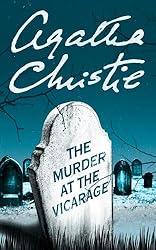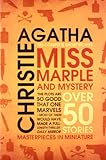
The Big Book of Christmas Mysteries:The Most Complete Collection of Yuletide Whodunits Ever Assembled edited by Otto Penzler is just the book to read at this time of year if, like me, you enjoy mystery fiction with a Christmas theme. It is a big book of 647 pages – so I have an e-book version and dip into into it each Christmas.
It contains stories by a variety of authors including Agatha Christie, Colin Dexter, Ellis Peters, Arthur Conan Doyle, Ellery Queen, Edgar Wallace, Peter Lovesey, Peter Robinson, Ed McBain, Sarah Paretsky, Mary Higgins Clark, Ngaio Marsh, Isaac Asimov, G K Chesterton, H R F Keating, Robert Louis Stevenson and more.
Rumpole and the Spirit of Christmas by John Mortimer is one of the stories in the section ‘A Funny Little Christmas’. In it Rumpole is at the Old Bailey defending Edward Timson, the youngest member of the huge south London family of criminals, charged with wilful murder. It’s Christmas and Eddie tells Rumpole his mum wants him hone for Christmas – but Rumpole wonders ‘which Christmas?‘
Will he make it? The evidence against him is strong. It all began when a war broke out between the Timsons and the O’Dowds when Bridget O’Dowd was chosen to play the role of Mary in the school nativity play and Eddie said she was ‘a spotty little tart unsuited to play any role of which the most notable characteristic was virginity‘. The resulting battle ended with the death of Kevin O’Dowd.
Rumpole is his usual grumpy self, getting drunk on wine in Pommeroy’s Wine Bar with the prosecuting barrister, Wrigglesworth, instead of hurrying home to his wife, Hilda (She Who Must be Obeyed) who has made him rissoles and frozen peas for his dinner. As I read it I could easily imagine the scenes, with Leo McKern playing the role of Rumpole.
Agatha Christie has two stories in the collection – the first is The Adventure of the Christmas Pudding in which Hercule Poirot investigates the theft of a priceless ruby stolen from a Far Eastern prince. The Christmas Pudding in question is a ‘large football of a pudding, a piece of holly stuck in it and glorious flames of blue and red rising round it’ and the second A Christmas Tragedy, a little puzzle of a mystery. Miss Marple tells the story of the death of Mrs Sanders and how it it had been made to look an accident when it was really a cold-blooded murder. I can’t see any connection in this story to Christmas, but it is definitely a tragedy and for a short story it is very complicated.
There are no stories by Charles Dickens in this collection but Morse’s Greatest Mystery by Colin Dexter begins with a quotation from A Christmas Carol, when Lewis knocks on the door of Morse’s North Oxford flat and Morse greets him whilst shouting down the phone to his bank manager. Like Scrooge Morse doesn’t like Christmas! This story is about the theft of a donation of £400 pounds to a charity for Mentally Handicapped Children the patrons of the George pub. Morse has to follow a series of clues to solve the mystery – and by the end he becomes more like the Christmas Scrooge …
~~~
As this is my last post before Christmas I wish you all a Merry Christmas and Happy Reading!
 Ingenious! That’s what I thought when I’d finished reading
Ingenious! That’s what I thought when I’d finished reading  I don’t think it’s one of her best, but I did like it. It begins with Miss Marple reminiscing with an old friend, Mrs Ruth Van Rydock, an American. Miss Marple has known her and her sister, Carrie Louise since they had been together at a pensionnat in Florence. Ruth is worried about Carrie Louise, who is now living in a country house in the south of England with her husband, Lewis Serrocold, which he has turned into a home for delinquent boys. She can’t put her finger on what is wrong, she just felt the atmosphere wasn’t right, whether it was the boys’ home – ‘those dreadful young delinquents‘ or something else and she asks Miss Marple to visit Carrie Louise to see if her fears are justified.
I don’t think it’s one of her best, but I did like it. It begins with Miss Marple reminiscing with an old friend, Mrs Ruth Van Rydock, an American. Miss Marple has known her and her sister, Carrie Louise since they had been together at a pensionnat in Florence. Ruth is worried about Carrie Louise, who is now living in a country house in the south of England with her husband, Lewis Serrocold, which he has turned into a home for delinquent boys. She can’t put her finger on what is wrong, she just felt the atmosphere wasn’t right, whether it was the boys’ home – ‘those dreadful young delinquents‘ or something else and she asks Miss Marple to visit Carrie Louise to see if her fears are justified. A Murder is Announced
A Murder is Announced Greenshaw’s Folly was first published in the Daily Mail 3 – 7 December 1956 and is included in
Greenshaw’s Folly was first published in the Daily Mail 3 – 7 December 1956 and is included in 